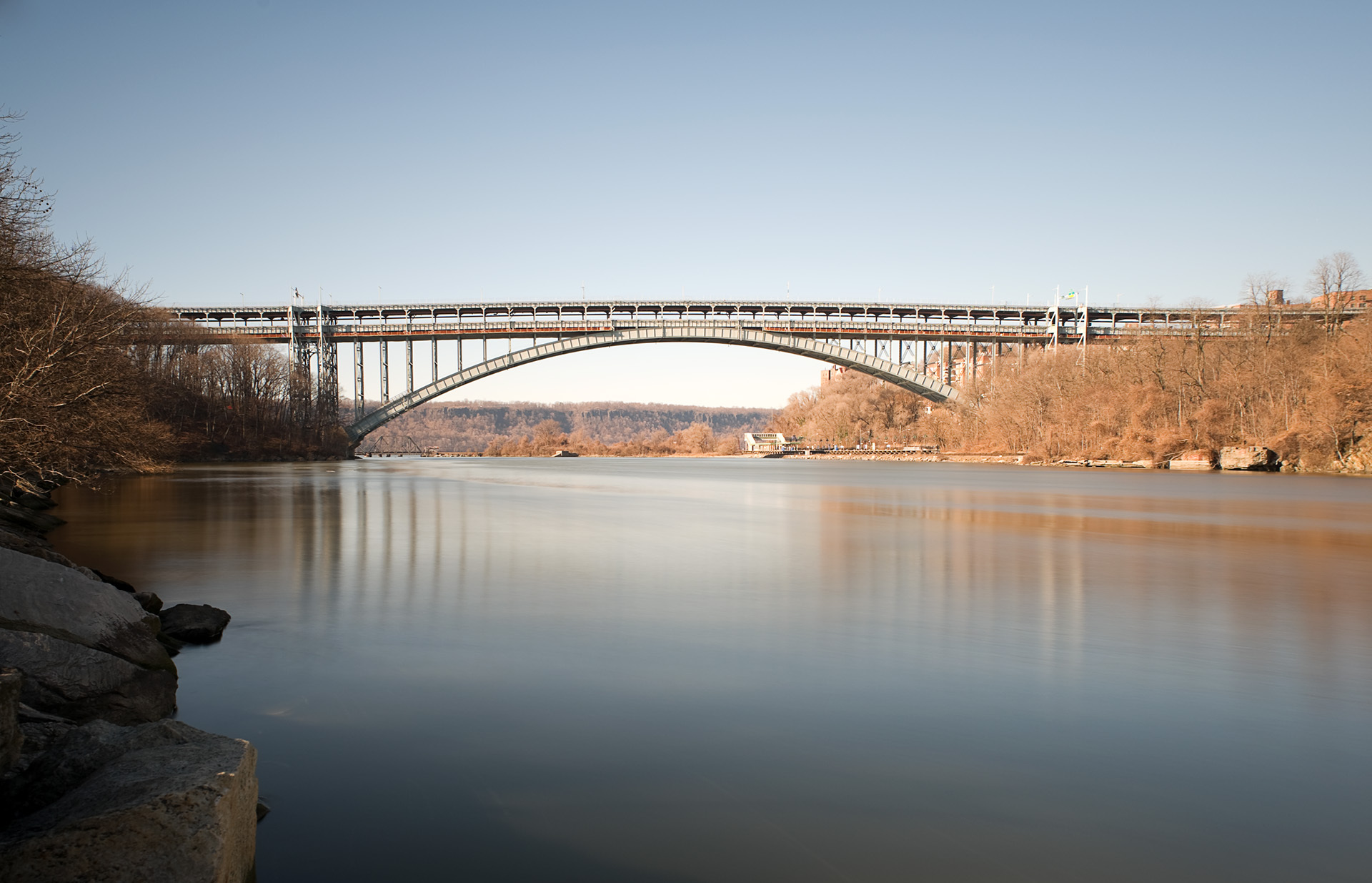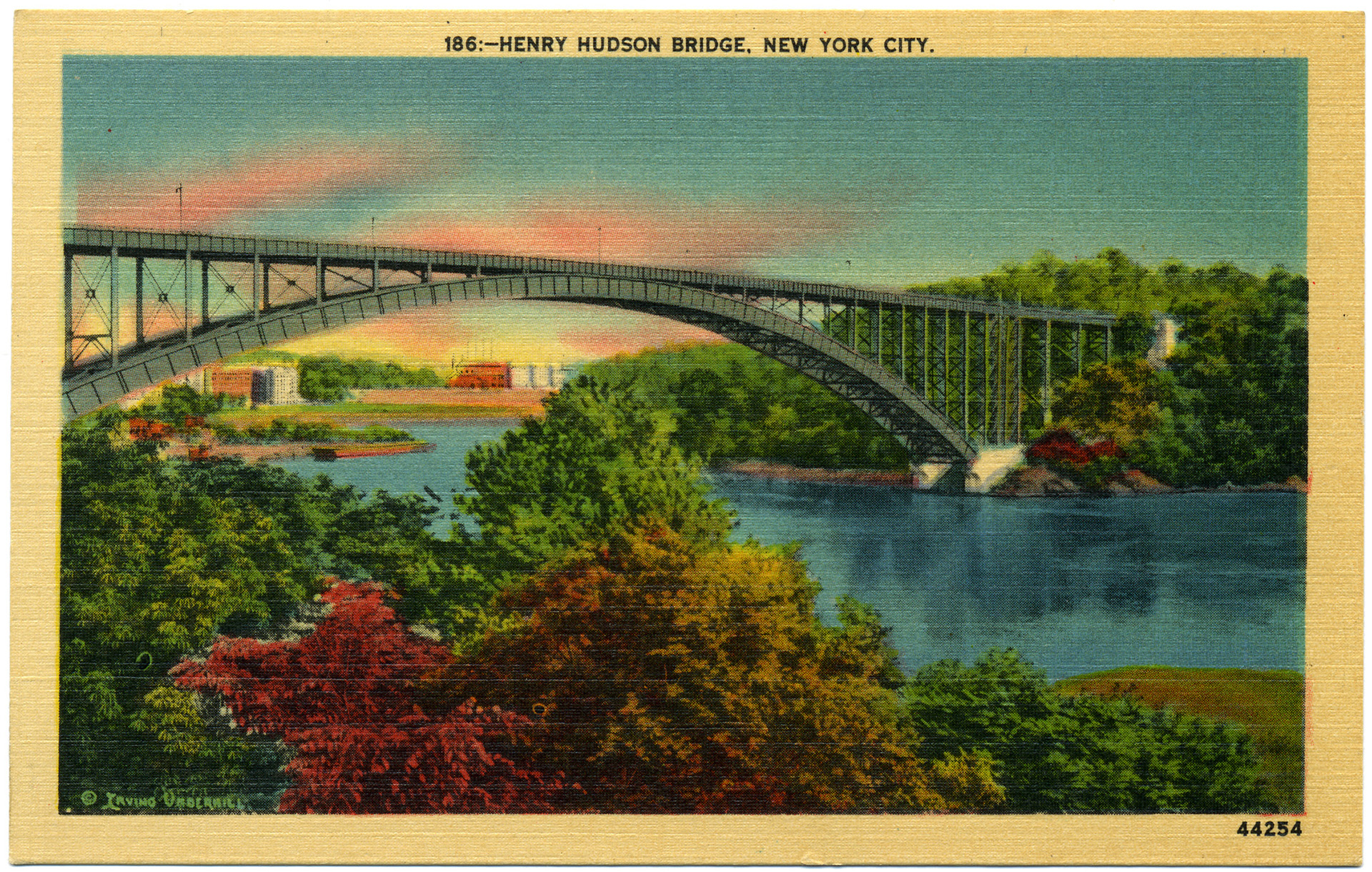Henry Hudson Bridge
Then
In 1904, New York City planned to build bridge to connect the Riverdale section of the Bronx with Inwood in Manhattan; the bridge was to be called the "Hendrik Hudson Memorial Bridge," and would be completed by 1909, in time to celebrate the 300th anniversary of Hudson's historic voyage. The initial design was submitted by Alfred Pancoast Boller and had Roman-style arches on either side of a main steel arch. Boller also drew alternate designs, one of which had the main arch covered in concrete (pictured here). Postcards and paintings were made in anticipation of the bridge, which would have been the longest arch in the world.
The anniversary came and went, and a design by David B. Steinman (done for his Ph.D. in civil engineering) was accepted in 1911. Steinman's design included a main steel arch and intricate masonry arch approaches; however, the Municipal Arts Society rejected the design, saying that it was out of place in the wooded areas the bridge was to connect.

Henry Hudson Bridge, 2010
Now
The bridge remained unrealized until the 1930s, when Robert Moses proposed the Henry Hudson Parkway, with an arch bridge engineered by Steinman (his 1934 proposal was very similar to the one completed in 1911, though it did not include the masonry arches); it opened on December 12, 1936. The 840-foot fixed plate girder arch design was, at the time, the longest of its kind in the world. To accommodate heavy traffic, a second deck was built and opened in 1938.
The bridge has alternately been painted dark green, gray, and blue. It is currently gray.
Since 2000, the bridge has undergone numerous repairs. Michael M. Grymbaum, in a 2011 New York Times article written on the week of the span's 75th anniversary, points out that ”the Henry Hudson Parkway was created as a picturesque thoroughfare for weekend riders, and, at the time, about 9,000 cars traversed the crossing daily. This year, that number reached 63,000.”
